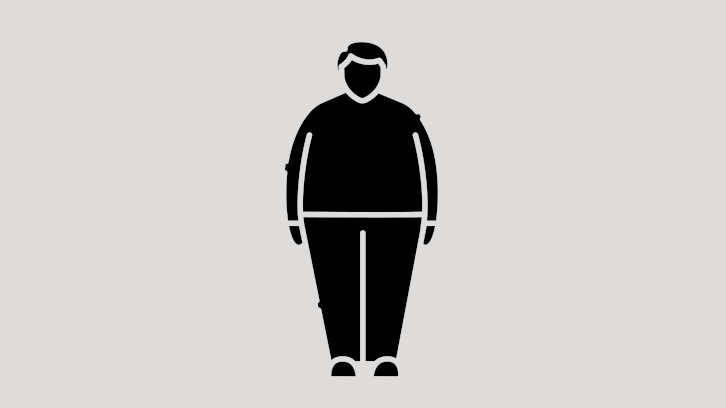Impulsiveness and compulsiveness in obesity and type II diabetes

Obesity is a complex and pandemic medical condition characterized by excessive fat accumulation associated with impulsiveness and compulsiveness. The disease predisposes the person to develop derived pathologies, including type II diabetes (T2D), with a brain impact on the dopaminergic system. A research group formed by the Hospital de Bellvitge and the Universitat Autònoma de Barcelona has described and compared different clinical conditions within the impulsive-compulsive spectrum, concluding that intervention plans should consider these criteria to include techniques aimed at better regulation of impulse control.
Obesity is a complex medical condition involving an excessive amount of body fat with multiple adverse effects on the physical and mental health. It is usually classified as a metabolic, nutritional, and endocrine disease, which increases the risk of other diseases and clinical problems. The worldwide prevalence of obesity has alarmingly increased, having nearly tripled in the last 50 years, reaching pandemic levels.
Impulsivity and compulsivity have been recently related to excessive food intake and weight gain. Impulsivity is a multidimensional construct, including personality traits (e.g., sensation seeking, lack of premeditation, and urgency), motor impulsivity (e.g., response inhibition), and choice impulsivity (e.g., decision making and deficits in delay gratification). By contrast, compulsivity is characterized by repetitive and persistent behaviors. In the context of overeating and obesity, impulsivity and compulsivity may be reflected by uncontrollable and repetition of maladaptive habits and a failure to shift behavior, despite its negative effects. An important dimension of compulsivity is cognitive flexibility, which is the ability to flexibly adjust behavior to the demands of a changing environment (e.g., attentional set-shifting and task-shifting).
People with obesity are more likely to onset and progress a number of comorbid serious health problems, including heart disease, digestive problems, sleep apnea, osteoarthritis, certain cancers and even severe symptoms for current diseases such as COVID-19. One condition usually associated to obesity is Type 2 diabetes (T2D), a metabolic disorder characterized by pancreatic cell dysfunction and insulin resistance (IR), which result in elevated levels of blood glucose. Impaired glycemic control and IR have been observed to impact brain dopaminergic systems, which may contribute to deficits in self-regulation, impulsivity (specifically in motor impulsivity), and impairment in cognitive functioning.
A study conducted by Doctors Fernando Fernández-Aranda and Susana Jiménez-Murcia (Psychiatric Service of the University Hospital of Bellvitge) and Dr. Roser Granero-Pérez (Department of Psychobiology and Methodology, UAB) aimed to describe and compare different clinical conditions along the impulsivity–compulsivity spectrum. The study especially focuses on individuals with obesity in the absence or presence of T2D, when compared with highly impulsive patients (namely, patients with addictive disorders), highly compulsive patients (namely, patients with anorexia nervosa, restrictive subtype), and healthy normal-weight individuals. Multiple neuropsychological and personality traits associated with impulsivity and compulsivity were compared, including neuropsychological tasks.
Individuals with obesity and T2D showed highly impulsive decision making, whereas the other measure of impulsivity, novelty seeking, was not associated with obesity with T2D, nor with obesity only. For the compulsive pole, individuals with obesity without T2D presented poor cognitive flexibility and high harm avoidance, although these dimensions were not associated with obesity with concurrent T2D.
These results suggest that the patients with obesity in the absence of T2D tend to be more rigid in their behaviors and to show more compulsive personality traits than those with obesity plus T2D. On the other pole of impulsivity, patients with obesity in the presence of T2D tend to be more impulsive in their decisions compared to healthy normal-weight controls. This observation is empirical evidence for allocating this concrete profile within the impulsive pole of the impulsive–compulsive spectrum. If so, the tendency to make impulsive choices may be expected to negatively impact self-control and diabetes management. Treatment plans should consider this specific characteristic including techniques particularly addressed to improve the regulation of impulse control.
Department of Psychobiology and Methodology
Universitat Autònoma de Barcelona
References
Testa, G.; Mora-Maltas, B.; Camacho-Barcia, L.; Granero, R.; Lucas, I.; Agüera, Z.; Jiménez-Murcia, S.; Baños, R.; Bertaina-Anglade, V.; Botella, C.; et al. Transdiagnostic Perspective of Impulsivity and Compulsivity in Obesity: From Cognitive Profile to Self-Reported Dimensions in Clinical Samples with and without Diabetes. Nutrients 2021, 13, 4426. https://doi.org/10.3390/nu13124426.


